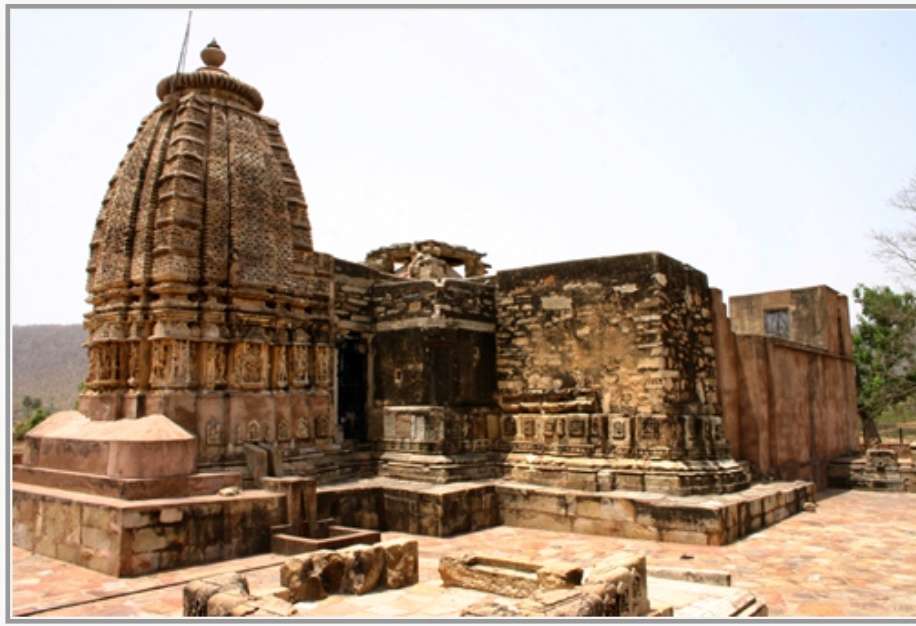It is confusion created by politicians and self-proclaimed historians that has unfortunately led to the Gujjar and Rajput communities being at loggerheads with each other over the past few years. The problem started with the distortion of the identity of medieval Rajput Emperor Mihirbhoj Pratihāra for narrow political gains. Unsurprisingly, it was BJP, which started the socio-political crisis when Delhi chief minister Sahib Singh Verma renamed a part of NH-24 as “Gurjar Samrat Mihirbhoj Marg” in 1997. The advent of internet witnessed poorly researched articles/blogs etc. which began mixing the terms Gujjar and Goojar with Gurjar and Gurjara (ancient terms for a region comprising parts of Rajasthan and Gujarat), Gurjar Pratihāra and Imperial Pratihāra
Hence, there is an urgent need to look at the different layers of distortion of history of the Imperial Pratihars, which needs investigation.
Noted historian, Prof Shantarani Sharma, highlights inscriptions of the Imperial Pratihars where they never alluded to any Gurjara association (Origin and Rise of the Imperial Pratiharas of Rajasthan, p. 30).It is only their rivals, such as the Arabs, who referred to them as “Lords of Gurjara”. On the contrary, their Gallaka inscription states that the founder of the Imperial Pratihar dynasty Nagabhata I defeated the “invincible Gurjaras to establish their supremacy in that region (EpigraphiaIndica- XLI, p. 49-57).
So where did the phrase ‘Gurjara Pratihāra’ come from? There is only one instance of the Rajor (a village in modern day Alwar) Inscription dated VS 1016 (959 CE) where a ruler Mathandeva calls himself “Gurjara-Pratiharanvaya” i.e. from the Gurjara-Pratihara lineage. This lone exception has been wrongly used to broad base the term by certain scholars (Origin and Rise of the Imperial Pratihāra of Rajasthan,p. 35).Furthermore, Mathanadeva belonged to the lineage at Rajor near Alwar, unikethe Imperial Pratihāra of Kannauj.
Famous archaeologist, Prof F Kielhorn, noted that this Gurjara-Pratihāra
lineage was identical to the Vadagujara-vamsaor ‘the Bargujar tribe of Rajputs mentioned in line eight of the Machedi inscription (VS 1439). Kielhorn also highlighted that Rajyapura, the capital of Mathanadeva, was next to the current village of Rajor (EpigraphiaIndica – 3, p. 269). In this inscription, Mathanadeva Bargujar highlighted his father Savat and his own prominence as masters of the town. The inscription also mentions a land grant to farmers who are called Sri Gurjaras i.e. inhabitants of Gurjaradesa. As per the inscription, Mathanadeva Bargujar also established Neelkanth Mahadeva temple at ancient Rajyapura (Sanskrit name for Rajor). It is noteworthy that this temple remains central to the identity of Bargujar Rajputs and houses their kuldevi (main deity) Ashawari Mata even today.
Rajadeva Bargujar was the founder of Rajyapura (Rajor) while another prominent member Vyaghraraja Bargujar founded Baghor/Vyaghrapattika village (Kishangarh Bas tehsil) as well as established the BagholaTalab (Dr Raghavendra Singh Manohar; Rajasthan ke Prachin Nagar aurKasbe; p. 28). The Bargujars were valuable feudatories of the Imperial Pratihars of Kannauj and Imperial Chauhans of Ajmer. Later, Matsyadeva Bargujar founded his own separate kingdom around Macheri and the capital shifted from Rajor to the nearby Macheri (tehsil Rajgarh, Alwar). Their inscriptions, which date back to VS 1426 to VS 1439, indicate they ruled a small principality comprising Rajgarh, Deoti and Macheri, who would withstand the might of the Delhi Sultanates. The Bargujar Rajputs of Deoti were suzerain to the Minas who appealed to them when in distress and were eventually defeated by the Mughal forces (A History of Rajasthan, Rima Hooja, p. 394, 410 and 505).
The Bargujars were also the original rulers of Dausa before a branch of Kachwahas from Narwar (near Gwalior) wrestled Dausa from them in the 11th century. In total, there are 16 villages of Bargujar Rajputs still extant in Alwar, of which the most notable are Tasing in Behror tehsil, Deoti in Rajgarh tehsil, and Macheri in Umren tehsil. They also had a chaubisi (24 villages) in parts of Gurgaon district adjacent to Alwar, and ruled from Bhondsi to Sohna (Gazetteer of the Gurgaon district, 188, p. 56). In 1753, Bahadur Singh Bargujar defended Ghasera fort (near Gurgaon) from Mughal forces led by Raja Surajmal Jat (Gazetteer of the Gurgaon district, 188, p. 24).
In the 17th century, a Bargujar by the name of Anuprai saved the Mughal emperor Jehangir from a lion on a royal hunt. In return, Jehangir rewarded him with land in Bulandshahr district, where he founded the modern day Anupshahr City (Bulandshahr District Gazetteer, 1980, p.272). Bargujars are also present in Aligarh, Badaun and Moradabad districts of UP. Some families converted to Islam, they are present in towns such as Muzaffarnagar and Aligarh, who go by the surnames of Lalkhani (A Handbook of Rajputs, AH Bingley, p. 46).Sir Muhammad Ahmad Said Khanof Chhatri, the Chancellor of AMU for 17 years (1965-82), was a Lalkhani Bargujar.
Therefore, historically the term “Gurjara Pratihar” denoted a branch or group known as Bargujar Rajputs as identified by historians Prof Kielhorn and BD Chattopadhyay. They were feudatories of the Imperial Pratihars and very distinct from them. The descendants of the Imperial Pratihars are the Parihar Rajputs of Kannauj, Gwalior, Bundelkhand and Baghelkhand. Historically, Gurjara, was always referred to as a region before politicians started the confusion by conflating Gurjar and Gurjara with Gujjar and Goojar in an effort to woo specific castes by appropriating history for vote bank politics.
(Originally Published at Times of India)





